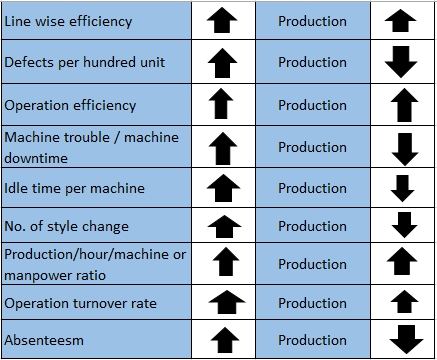What is Key performance indicator?
Key performance indicator (KPI) means a set of measurements, that are
quantifiable and those measurements are used to find out the company’s overall
performance in long term. KPI defers depending on the type of company. KPI can
also be used as a comparison tool between companies within the same sector.
KPI measures will also vary depending on the objective of different organizations. KPI is a form of communication. So, while setting up the KPIs of a specific company one should keep in mind the target and objectives of the organization.
Which measurements can be considered as Key performance indicators?
Every company has majorly two goals.
1. Gaining business profit.
2. Providing quality products to the customers.

That’s why key performance indicators of a company should also majorly
focus on these two aspects.
Each company should have the following KPI measures:
Strategic measures: Every company has a specific goal to accomplish. This strategic measures of KPIs basically track whether or not the company is on its way to fulfill its goals.
It checks:
- Is the company is fulfilling the demand of the customer or the stakeholders?
- How the company is performing financially?
- What is the ‘Net profit’ of the company?
- What is the capacity of the company?
- How the company is utilizing its capacity? / What is the capacity utilization rate?
- Are the internal processes operating up to their full potential?
Operational measures: No company can be profitable if their operations are not sustainable and synchronized. Proper planning, tactic, teamwork, appropriate machines and work aids are needed to perform an operation successfully.
Operational KPIs basically measures:
- The efficiency of the operations and tactics.
- The everyday performance of the company (production of the products or delivering service)
Project measures: Keeping track of every new project is necessary. It helps a company to know which projects are the most profitable and which project needs to be redesigned or terminate.
Project KPI measures:
- The progress of the projects.
- The effectiveness of the project.
Also read:
What is learning curve? | Application of learning curve in textile and apparel industries | Types of learning curve
Risk measures: There are some risk factors associated with every project, every operation. These risk factors need to be identified and monitored continuously, otherwise they can have a negative impact on the operation and the success of a project.
Risk KPI measures:
How the company is handling the risk associated with an operation.
Employee measures: Employees are the driving force of a company. A happy, energetic, ethical workforce greatly impacts the success of a company. Various innovative measures are taken by companies all over the world to keep their employees happy and dedicated.
Employee KPI measures:
- The behavior of the employees and the culture the company cherishes.
- The performance of the employees.
- The skills of the employees.
 |
| KPI measures |
Operational measures of KPI can be further categorized into:
Input measures: It tracks the resources that are consumed during all the processes to produce a particular output.
Information collected:
- The amount of money consumed.
- The quantity of input materials.
- The type of input materials.
- The quality of input materials.
Process measures: What is the overall performance or efficiency during the production of a particular product is measured here.
Information collected:
- Efficiency of the process.
- Quality and consistency of the process performance.
- How efficiently and effectively the machines, tools and work aid have been used?
Output measures: It measures various attribute of the output materials.
Information collected:
- Quality of the output product.
- Quantity of output products produced at a specific period of time (ex- one hour/one day)
Outcome measures: Each product has an outcome or impact on the company. A successful
product can bring a huge profit for the company and also create brand awareness.
Information collected:
- What is the impact of the product on the company?
- How much profit is the product making?
- What is its contribution to create brand awareness?
- What is the customer feedback?
 |
| Operational KPI measures |
What are the objectives of KPI?
- It measures whether or not the company has achieved the desired goal.
- The acquired information help the company in decision making.
- KPI measures continuously keeps track with the efficiency, effectiveness of different operations.
- It also keeps track with the input, output, quality, timeframe of different operation and how the machines, tools and equipment are used by the workers.
- It measures the outcomes of every project.
- It also acts as a comparison tool.
What are the Key performance indicators in a garments factory?
Cutting section:
- Cutting efficiency
- Cutting production
- Defects per hundred unit (DHU)
- Cutting delay
- Input delay
 |
| Relation between cutting KPIs and production |
Sewing section:
- Line wise efficiency
- Defects per hundred unit
- Operation efficiency
- Machine trouble / machine downtime
- Idle time per machine
- No. of style change
- Production/hour/machine or manpower ratio
- Operation turnover rate
- Absenteeism
 |
| Relation between sewing section KPIs and production |
Fabrics and trims:
- Claimed amount Vs. recovered amount
 |
| Relation between fabrics and trims KPI and company profit |
Finishing and shipment:
- Production
- Defects per hundred unit
- Cut to ship ratio (How much fabric has been cut Vs. how much fabric has been shipped)
- Audit pass rate
- Order to ship ratio
- Air shipment
 |
| Relation between finishing and shipment KPI and company profit |




0 Comments